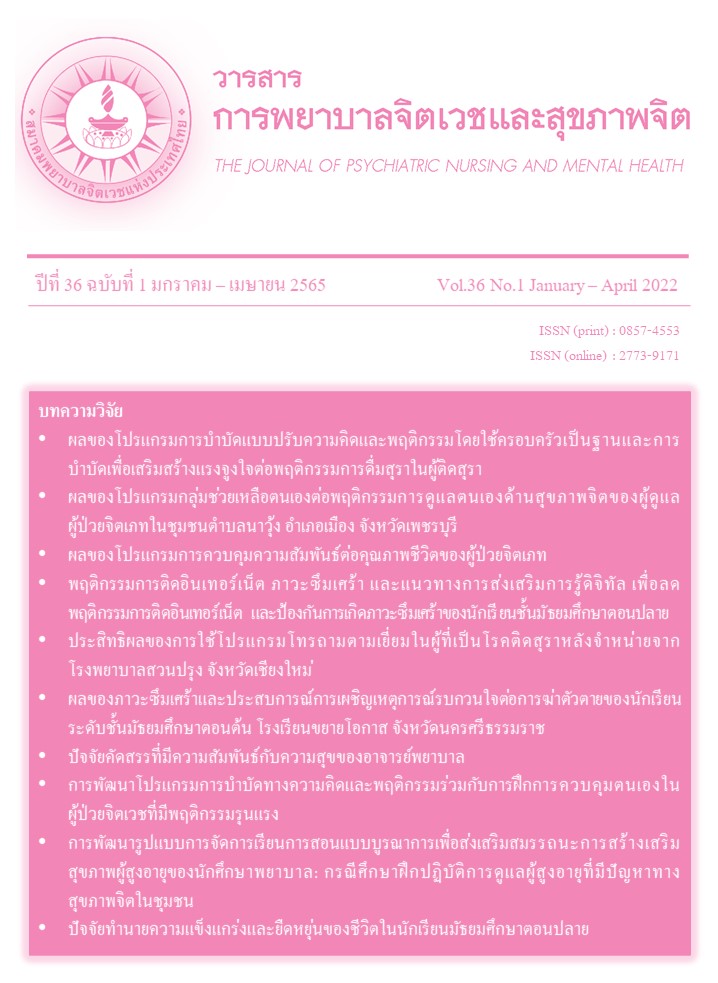PREDICTORS OF RESILIENCE AMONG HIGH SCHOOL STUDENTS
Main Article Content
Abstract
Objective: The purpose of this study was to examine resilience, factors associated with resilience and predicting factors of resilience among high school students.
Methods: This predictive correlational study with convenience sample of 421 high school students was conducted at two schools in Bangkok. Data were collected by a set of self-report questionnaires including a demographic questionnaire, Negative Life Events Scale, Mindful Attention Awareness Scale, and the Resilience Inventory. Descriptive statistics, Pearson's product moment correlation, and multiple regression were employed for statistical analyses.
Results: Majority of the participants were female (59.6%). The mean age was 16.3 years old. Students reported as having quite high scores on resilience (M = 104.7, SD = 14.6). Pearson’s correlation indicated a moderate level of correlation between resilience and mindfulness, and a low level of correlation between resilience and academic performance, negative life events, and sufficiency of monthly stipend. The findings revealed that all studied factors were jointly predicted resilience (R2 = .18, F = 15.038, p < .01) and accounted for 18.0% of the variance on resilience. Mindfulness (β = .376, p < .01) and academic performance (β = .099, p < .05) were found to be statistically significant predictors of resilience among high school students.
Conclusion: Mindfulness and academic performance are predictors of resilience among high school students. The findings can be used as basic information to develop nursing interventions for adolescents to promote resilience on the basis of enhancing ability for academic performance together with mindfulness in order to promote mental health and prevent mental problems.
Article Details

This work is licensed under a Creative Commons Attribution-NonCommercial-NoDerivatives 4.0 International License.
บทความที่ได้รับการตีพิมพ์แล้ว เป็นลิขสิทธิ์ของสมาคมพยาบาลจิตเวชแห่งประเทศไทย


